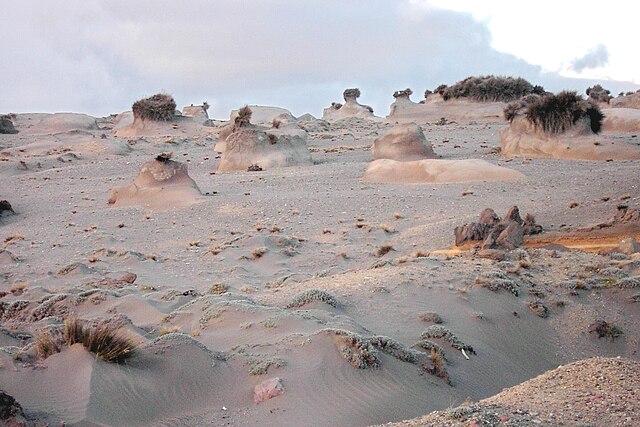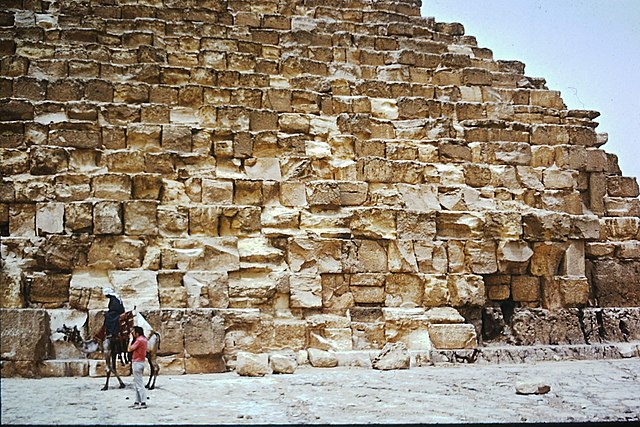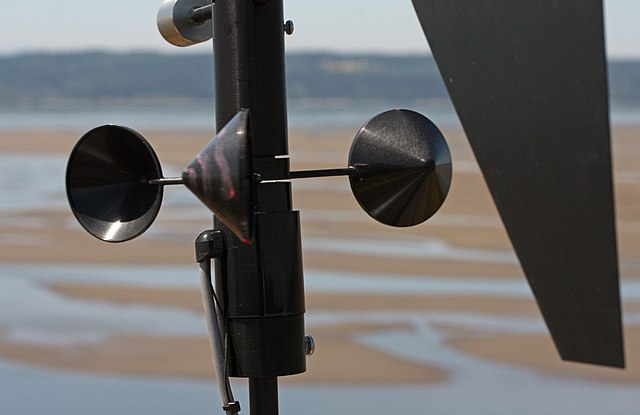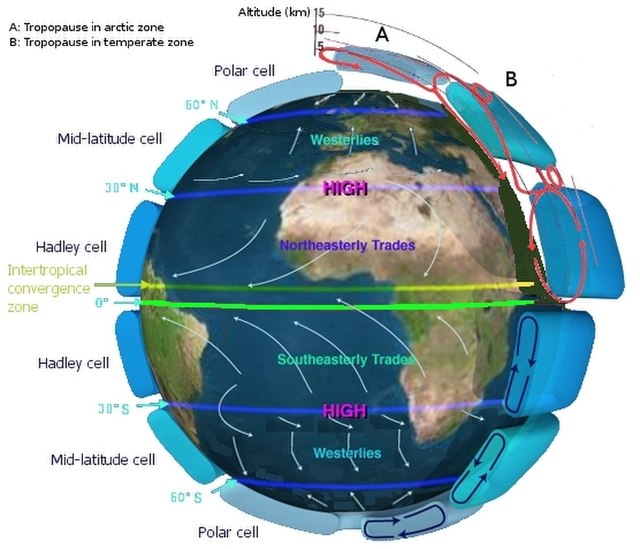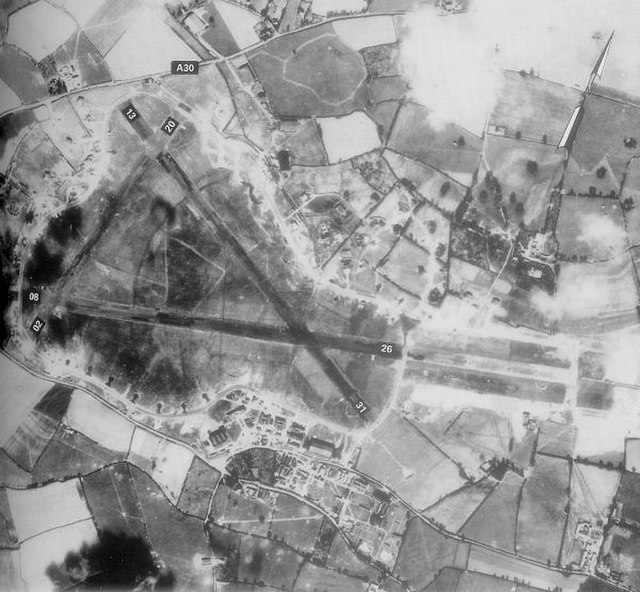Aeolian processes, also spelled eolian, pertain to wind activity in the study of geology and weather and specifically to the wind's ability to shape the surface of the Earth. Winds may erode, transport, and deposit materials and are effective agents in regions with sparse vegetation, a lack of soil moisture and a large supply of unconsolidated sediments. Although water is a much more powerful eroding force than wind, aeolian processes are important in arid environments such as deserts.
Wind erosion of soil at the foot of Chimborazo, Ecuador
Rock carved by drifting sand below Fortification Rock in Arizona (Photo by Timothy H. O'Sullivan, USGS, 1871)
Sand blowing off a crest in the Kelso Dunes of the Mojave Desert, California
Effects of wind erosion at Giza pyramid, May 1972
Wind is the natural movement of air or other gases relative to a planet's surface. Winds occur on a range of scales, from thunderstorm flows lasting tens of minutes, to local breezes generated by heating of land surfaces and lasting a few hours, to global winds resulting from the difference in absorption of solar energy between the climate zones on Earth. The two main causes of large-scale atmospheric circulation are the differential heating between the equator and the poles, and the rotation of the planet. Within the tropics and subtropics, thermal low circulations over terrain and high plateaus can drive monsoon circulations. In coastal areas the sea breeze/land breeze cycle can define local winds; in areas that have variable terrain, mountain and valley breezes can prevail.
Cup-type anemometer on a remote meteorological station
An occluded mesocyclone tornado (Oklahoma, May 1999)
Winds are part of Earth's atmospheric circulation
RAF Exeter airfield on 20 May 1944, showing the layout of the runways that allow aircraft to take off and land into the wind

